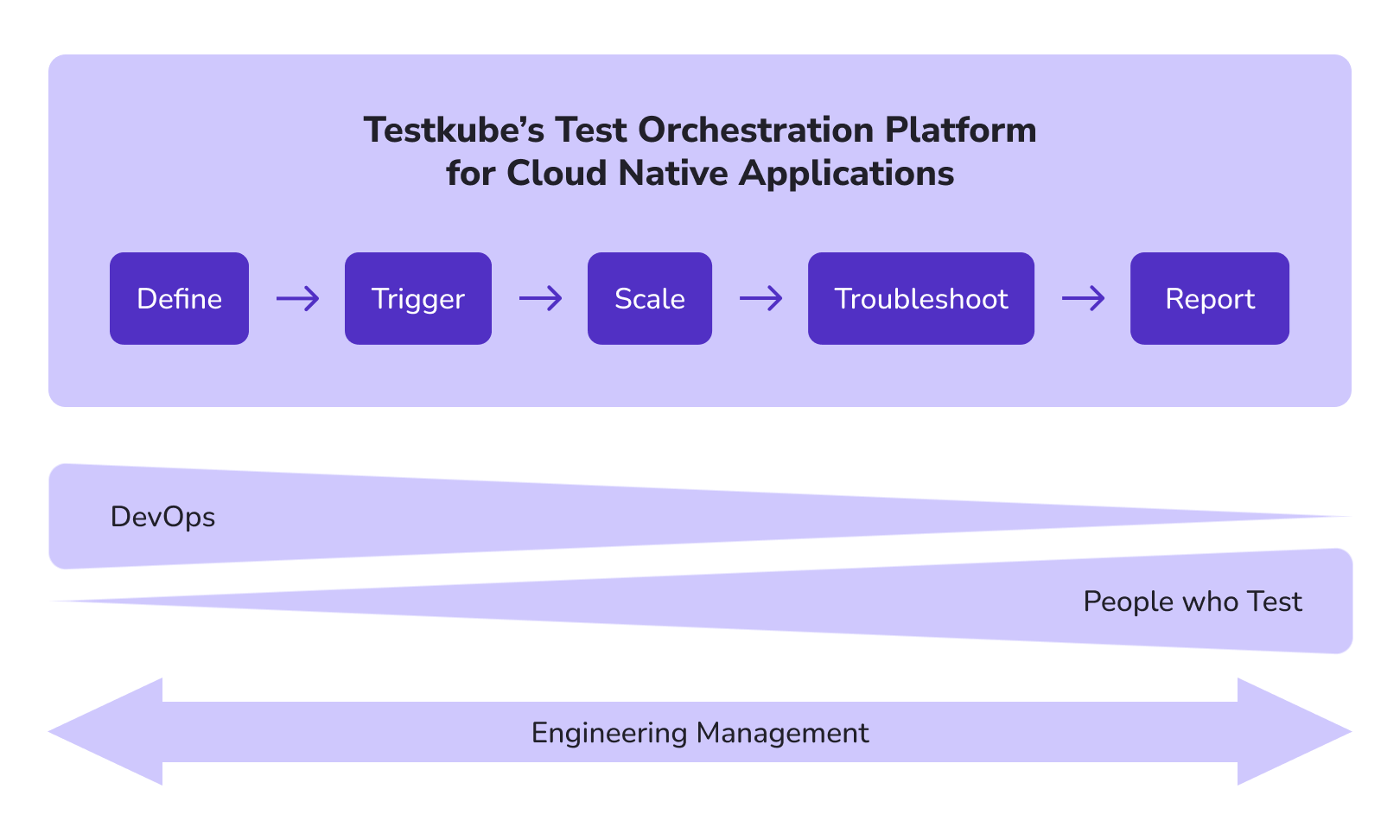Testkube in the STLC
Overview of the STLC
The Software Testing Lifecycle (STLC) is a well-established process used to ensure that software applications meet stakeholder requirements and are free from defects. The lifecycle comprises several phases, each with its specific objectives and deliverables.
Phases of the STLC
-
Requirements Analysis:
Understanding what needs to be tested. -
Test Planning:
Planning how the requirements will be tested. -
Test Case Development:
Authoring the actual test cases. -
Test Environment Setup:
Preparing the test environment. -
Test Execution:
Executing your tests in the test environment. -
Test Closure:
Ensuring that all testing activities are completed.

Testkube for Test Execution
Testkube focuses entirely on the Test Execution phase of the STLC, while integrating with tools involved in the other phases as needed. It breaks down Test Execution into the following five key steps:
Five Steps in Test Execution
-
Define:
Configuring how your tests are executed in your environment. -
Trigger:
Initiating the actual execution of your tests. -
Scale:
Managing the scaled execution of tests across your infrastructure. -
Troubleshoot:
Investigating test failures by analyzing logs, artifacts, etc. -
Analyze:
Reviewing test results from both tactical and strategic perspectives.
Stakeholders
-
DevOps:
Focus on setting up and executing tests (steps 1-3). -
Dev/QA:
Concentrate on troubleshooting and analyzing test results (steps 4-5). -
Management:
Indirect stakeholders who ensure applications are thoroughly tested before production.
Visual Overview
The following diagram visualizes the Test Execution pipeline supported by Testkube:

Further Reading
Learn more about how to configure and manage your tests by exploring additional topics: